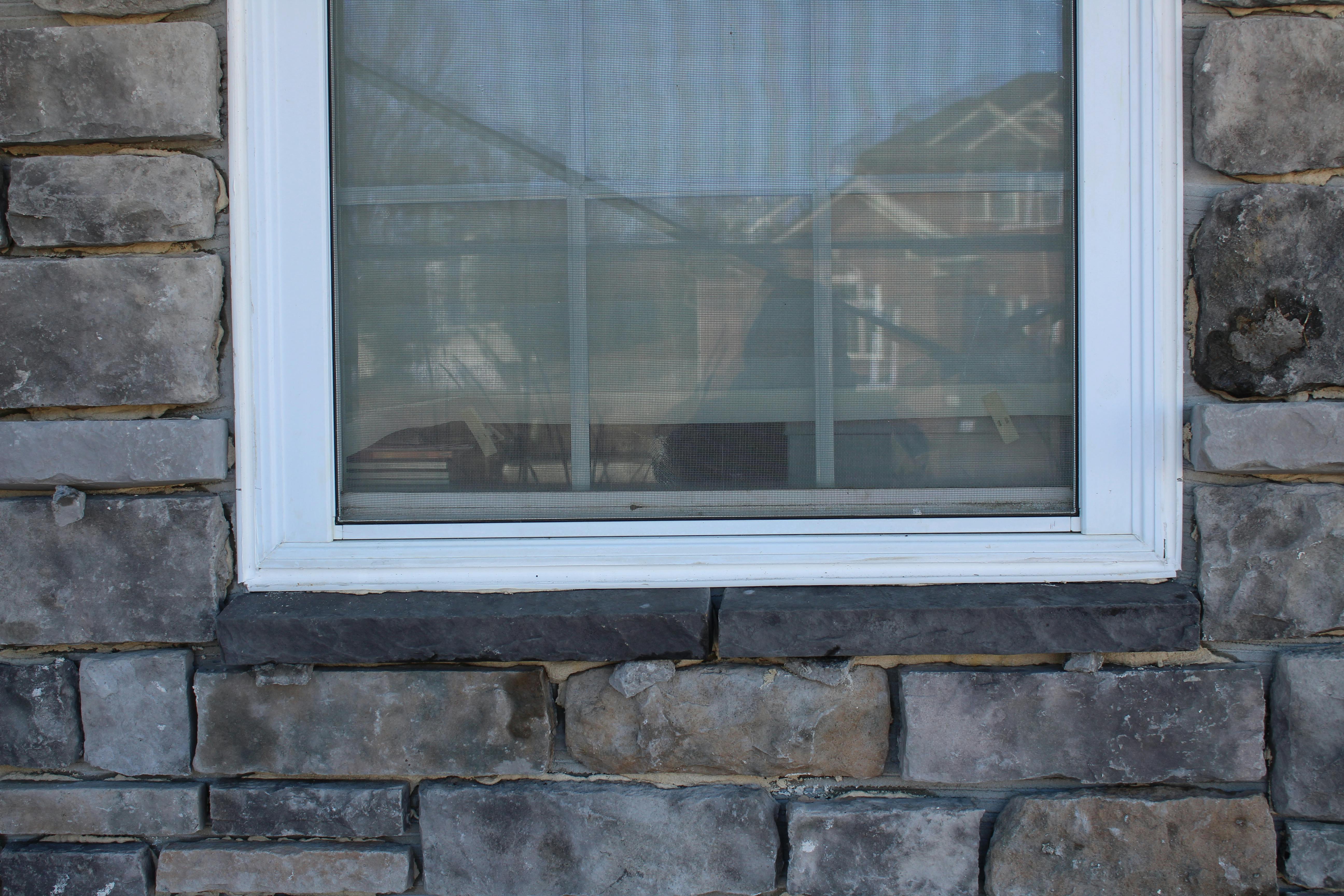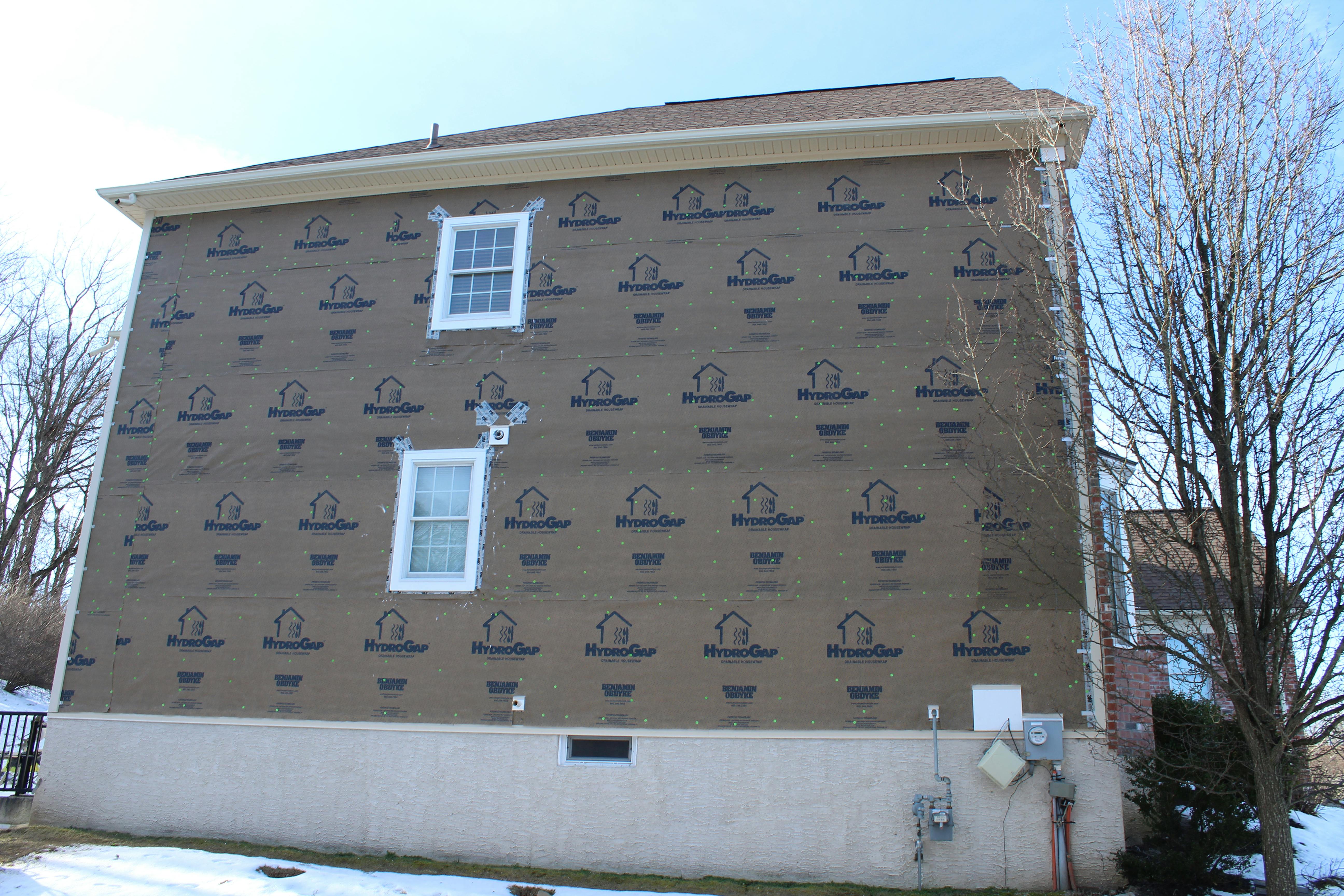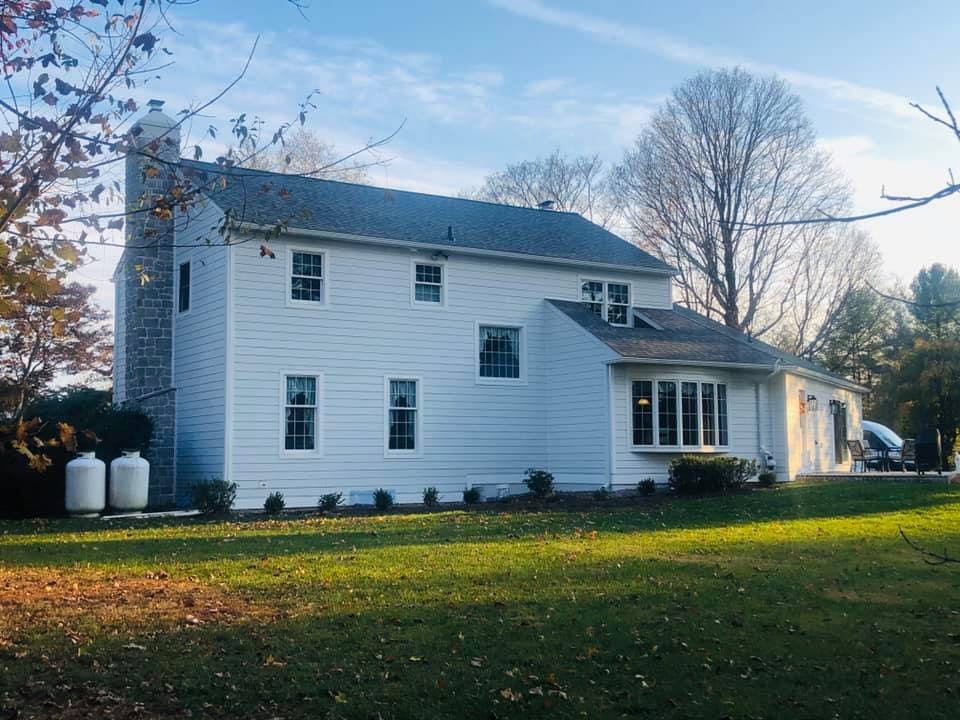
While stucco is our most popular home exterior option, stone veneer comes in second, and for good reason. Stone veneer is a highly customizable exterior option that is applied to the surface of your walls like any other veneer. It comes in both natural and manufactured options, but in this article, we’ll be focusing on the benefits of manufactured stone veneer specifically that have made it an increasingly popular choice for many homeowners.
Comparison to Natural Stone
Manufactured stone veneer has the same durability as natural stone veneer, but less durability than full-thickness natural stone. However, it also has a significantly lower weight than full-thickness stone, which is one of the primary benefits of stone veneer. Even compared to natural stone veneer, manufactured has a slightly lower weight. Additionally, manufactured stone has a lower cost and is better for the environment because it’s manufactured using concrete, sand, and other filler materials rather than being quarried out of the landscape. And, manufactured stone has a more predictable quality. Natural stone quality can vary widely, but this isn’t something you need to worry about with manufactured stone.
Style and Color Options

When it comes to style and color options, manufactured stone veneer is more customizable than natural stone. First off, the selection of natural stone types may be limited by your geographic location. If you’re looking for a type of stone that isn’t naturally sourced, it’s likely going to be harder to come by and come with a higher price tag as well. Manufactured stone doesn’t have this same problem. Regardless of the stone type you’re looking for, it can be manufactured anywhere for the same low price.
The wide variety of color options is often touted as the biggest visual benefit of using manufactured stone veneer. During the manufacturing process, dyes are used to replicate the colors of natural stone. However, they are also sometimes used to create new colors not normally seen in their natural stone counterparts. This means you may be able to find a river stone style veneer but in a granite color. In the past, the color of manufactured stone was known to fade quicker than that of its natural counterpart. But, thanks to advances in color locking over the years, this is no longer an issue in most environments.
While not exactly an option, the size and shape of the stones are two aspects of manufactured stone veneer’s style that are improved compared to natural stone. Natural stone comes in all shapes and sizes, which can be nice at times. The problem with that is when their shapes and sizes are too varied. This can make installation much more difficult as it turns the veneer into a challenging jigsaw puzzle. With manufactured stone, the sizes and shapes of the stones are much more consistent so the installation process goes much smoother. However, they are not so consistent as to look manufactured.
Installation Process

The installation process of manufactured stone veneer is much easier than that of real stone. Compared to full-thickness natural stone, a manufactured veneer is much lighter and easier to handle. And even compared to natural stone veneer, the manufactured option is slightly lighter. This lighter weight serves the dual purpose of speeding up installation times and putting less stress on the supporting wall. Additionally, as previously mentioned, the more consistent sizes and shapes of manufactured stone make it easier to install as well.
As for the installation itself, because stone veneer is not self-supporting like full-thickness stone, it must be attached to a pre-existing wall. This wall can either be interior or exterior, and the installation process will be slightly different depending on where the veneer is being installed. For interior use, the installation is fairly straightforward. The wall will either have to be scored or have some kind of backing, usually a lath screen, attached to it. Then, adhesive and mortar will be used to attach the stone veneer to that surface.
Exterior installations involve a few more steps. This is because the exterior of your home needs to be weather resistant to protect the structural integrity of the wall. First, a moisture barrier is installed with a weep screed at the bottom so that water can be expelled from the system. Next, flashing is installed around windows, doors, and utility entry points. Then, an air channel made of breathable foam is installed so that the remaining moisture in the wall can be dried. Finally, the lath screen backing is attached to the wall and the veneer is applied to it with adhesive and mortar.

Vinyl Siding is a Cost-Effective Home Exterior
In this article, we take a look at an alternative home siding option.
Conclusion
Manufactured stone veneer has increased in popularity over the past decade thanks to improvements in the quality of and options available with manufactured stone. It has the same durability and aesthetic appeal as natural stone but is easier to install and is better for the environment. Because it’s manufactured, it also comes in a wide variety of colors and styles that natural stone cannot, while still being a cheaper option overall. And, the installation process is no different from any other veneer installation. It can be installed on both the interior or exterior of your home without issue.
Friel Exteriors
If you’re interested in the aesthetic appeal of a natural stone home exterior, you should give some serious thought to manufactured stone veneer as an alternative. At Friel Exteriors, we install both natural and manufactured stone veneer, as well as a variety of other home exterior options. Contact us today to learn more about the veneer options available and to receive a quote.




